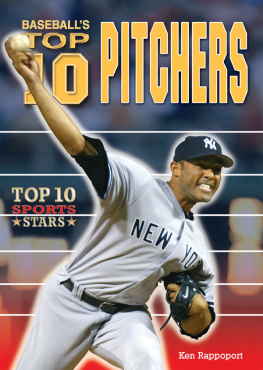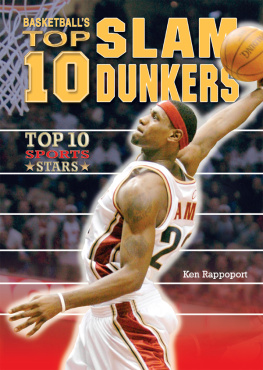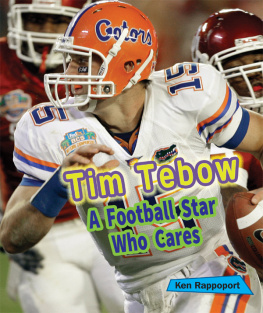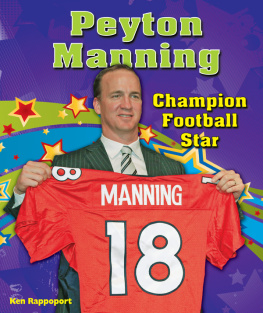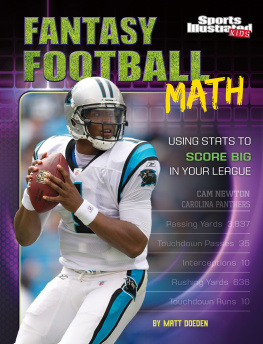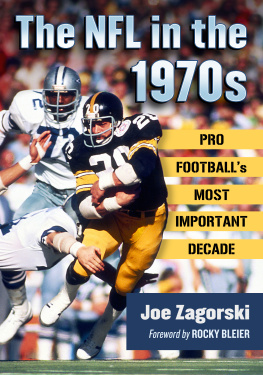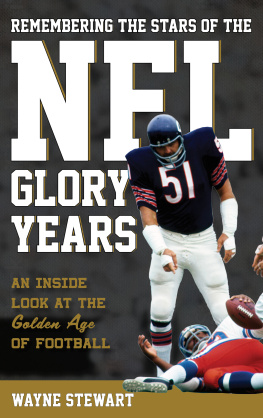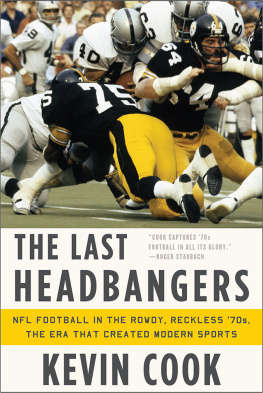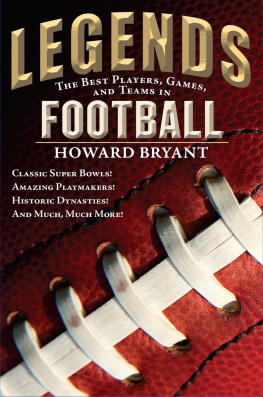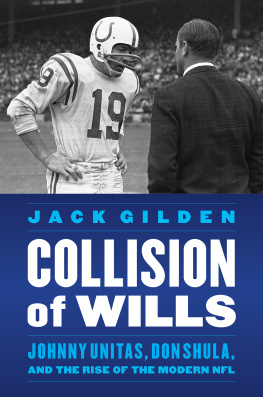An imprint of The Rowman & Littlefield Publishing Group, Inc.
All rights reserved. No part of this book may be reproduced in any form or by any electronic or mechanical means, including information storage and retrieval systems, without written permission from the publisher, except by a reviewer who may quote passages in a review.
Rappoport, Ken.
The little league that could : a history of the American Football League / Ken Rappoport.
p. cm.
Includes index.
ISBN 978-1-58979-462-7 (cloth : alk. paper) ISBN 978-1-58979-463-4 (electronic)
1. American Football LeagueHistory. I. Title.
The paper used in this publication meets the minimum requirements of American National Standard for Information SciencesPermanence of Paper for Printed Library Materials, ANSI/NISO Z39.48-1992.
Acknowledgments
N o one can do a book alone, and this is most certainly the case with The Little League That Could. First and foremost, I must thank Barry Wilner for his input. I am most grateful for his expertise in the preparation of this book.
Nor could the story of the AFL be told without input from dozens of people who graciously shared their recollections.
Heartfelt thanks go out to Jack Steadman, who was there at the start with Lamar Hunt when the idea of a new league took shape. And thanks also to Barron Hilton, the original owner of the Chargers whose franchise was one of the linchpins of the little league that dared to stand up to the established NFL in a true David-versus
Goliath test.
Norma Hunt, Lamar Hunts widow, shared personal stories, as did her son, Clark.
I am grateful also to Patrick Sullivan, son of the Patriots original owner, Billy Sullivan, for insights into his father. And to Al Locasale, a longtime personnel director with the Raiders. Thanks also to Art Modell, longtime owner of the Cleveland Browns, and Mike Brown, son of football legend Paul Brown.
The following players were also kind enough to share their recollections of a different time in American sports:
Larry Eisenhauer, Ron Mix, Billy Shaw, George Saimes, Ed Rutkowski, Booker Edgerson, Elbert Dubenion, Jon Morris, Larry Garron, Len Dawson, Lance Alworth, Norm Evans, Bob Johnson, Tommy Brooker, Larry Grantham, Lionel Taylor, and Willie West.
Thanks also go out to Ed Abramoski, Ron Hobson, Gil Santos, Ange Coniglio, Gerald Eskenazi, Scott Berchtold, Gil Brandt , Jack Brennan, Joe Browne, Harvey Greene, Joe Horrigan, Stacey James, Bill Johnston, Frank Ramos, Jim Saccomano, Teresa M. Walker, and John Wawrow.
Prologue
I magine:
No Super Bowl.
No Monday Night Football.
No national TV contract for the NFL and no shared revenues.
Without Lamar Hunt, longtime owner of the Kansas City Chiefs, what would pro football be like today?
Think about it, said Hall of Fame quarterback Len Dawson. No American Football League, no merger with the National Football League.
And none of the innovations that are so familiar to fans of todays game, such as the two-point conversion, player identification on uniforms, or official time on the scoreboard clocks.
Lamar was a visionary, said Jack Steadman, the longtime top executive with the Kansas City Chiefs who worked with Hunt to help form the AFL in 1960. Without question, Lamar held the league together until the merger and then was the principal one to negotiate the merger with the NFL.
With Hunt one of the driving forces, the AFL challenged the NFLs dominance in professional football. In head-to-head competition for players and the sports public affection, the AFL more than held its own for 10 seasons from 1960 through 1969. Along the way, the competing leagues merged, changing the face of football forever.
No AFL teams folded, and only two teams changed cities during the leagues 10-year existence.
A far cry from other leagues that had challenged the NFL, which had been in existence since 1920, when it was known as the American Professional Football Association.
In three different decadesthe 1920s, 1930s, and 1940sa league calling itself the AFL tried to make a go of it against the entrenched NFL. All failed.
The All America Football Conference was another pretender and would last only four years before it had three teams absorbed by the NFL.
In later years, the United States Football League and the World Football League would add their names to leagues that had failed to successfully challenge the NFL.
But none had the staying power of the 1960s version of the AFL, which had the resources, talent, and drive to challenge the lordly NFL.
Same game of football, more flair.
That was the ID of the AFL, that it was wide-open football, throw it any place, anywhere, and any time, said defensive back Willie West, who played for St. Louis in the NFL before hooking up with Buffalo, Denver, New York, and Miami in the AFL.
Offenses were geared to scoring bunches of points, so they did lots of passing. And it was almost all medium-range to deep passes. The deep pass at that time was really the most relied-upon offensive play in the AFL.
The fourth AFL had flash and dash.
With gunslinging quarterbacks such as John Hadl, Joe Namath, George Blanda, Len Dawson, Jack Kemp, Babe Parilli, and Daryle Lamonica throwing their bombs, high-scoring games were the norm.
Sid Gillman, who coached the high-powered HadltoLance Alworth combination at San Diego, was largely responsible for moving the passing game to soaring new heights.
A telling statistic: In every season of the AFLs 10-year history, the league posted a higher average than the NFL of passes thrown per team, and it wasnt even close.
In 1968, the NFL seemed to be living up to its image as a conservative running league when its teams averaged but 192 passes for the season. By comparison, AFL teams averaged a staggering 404.
The AFLs image as a high-powered offensive league wasnt a myth. Comparing the two leagues, AFL teams had the three highest point totals in any of the 10 seasons: Houston in 1961 with 513 points and the Oakland Raiders with 468 in 1967 and 453 in 1968.
Another telling stat: In seven of the 10 seasons that the two leagues existed simultaneously, the AFL averaged more touchdown passes per season. And in nine seasons, the AFL outdistanced the NFL in total passing yardage per team.
Not that the NFL was totally inefficient in the passing game. In fact, NFL quarterbacks posted a higher completion percentage than their AFL counterparts every season of the 10-year period. Another startling stat: NFL passers completed better than 50 percent of their pass attempts every year, while AFL quarterbacks never had a season with more than 50 percent pass completions.
The AFL, though, continued to draw attention to itself with its flashy, pass-oriented attacks.
The league made sure that millions of fans across the country saw them fill the air with footballs. They put all of their regular-season games on network TV, another football first. With 14 season games, two more than the NFL, the AFL had plenty of action to show.


